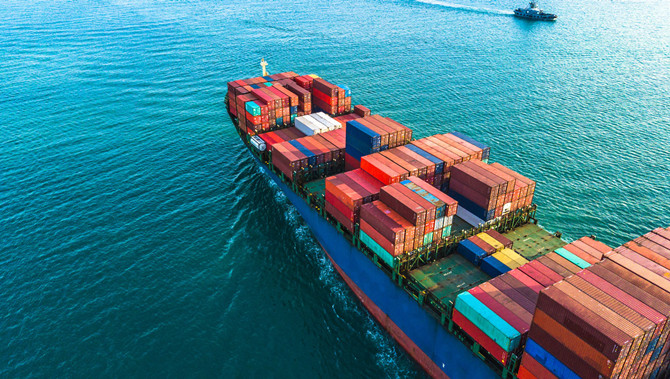Many container shipping companies have been forced to draw contingency plans to mitigate supply chain disruptions stemming from operational delays in China as new COVID-19 related cases emerge in Shenzhen and Guangzhou.
While Shenzhen has ports like Yantian and Shekou, Guangzhou houses Nansha port.
Yantian International Container Terminals, or YICT, yard density remains elevated with disinfection and quarantine measures being continuously implemented by local authorities to prevent the spread of COVID-19, Maersk said in an advisory on June 8.
“We expect continued terminal congestion and vessel delays upwards of 15 days in the coming week,” it said.
At the Shekou port, “from 00:00 AM 6th of June to 23:59 PM 13th of June, export laden container gate-in will be accepted only 3 days prior to vessel ETA,” while at the Nansha port, “from 00:00 AM 7th of June, export laden container gate-in will be accepted only 7 days prior to vessel ETA,” it said.
Due to these disruptions, several vessels will be omitting the Port of Yantian and Shekou in order to protect schedule reliability, it added.
Hapag Lloyd on June 9 also issued a customer advisory on its port of Yantian omissions on Transpacific Eastbound Services to minimize vessel idle time and port congestion.
Mediterranean Shipping Company said on June 2 said that “overall operation productivity at YICT has been adversely impacted”. MSC was omitting a number of calls at the Yantian port while continuing to monitor the situation, it added.
The ongoing congestion at Yantian port has not only aggravated the container shortage but also caused ripple effects at other ports, industry sources told S&P Global Platts separately.
“The Yantian port can only handle 500 boxes a day now compared with 30,000 before… The vessels can't call Shekou or Nansha because these ports don't carry the capacity to handle such large volumes,” a logistics provider based in Hong Kong said, adding that the congestion had spread to other ports.
“The Yantian issue will definitely snowball. Even if they say the resolution will be found by July, it will have lingering effects,” the logistics provider said.
Freight rates stay strong
Meanwhile, global container shipping rates remain elevated due to strong demand for consumer goods amid strong market fundamentals. A lower number of ships were available with carriers wanting to secure more tonnage.
“During Q4, global container volumes continued to increase due to a strong demand for consumer goods. Asia-North America trade volume increased in Q4 by 40% year on year,” container transportation company Ocean Network Express said in its financial results presentation for the year ended April 30, 2021.
CMA CGM on June 4 said its carried volumes in first quarter of 2021 were up 10.7% from first quarter of 2020 to 5.5 million TEUs, reflecting the quarter's strong business activity.
“The sustained demand for the shipping of consumer goods seen since the summer of 2020 is expected to continue in the second half of 2021,” it said.
A 700 TEU ship was being chartered for just under $10,300 per day and, at the other end of the scale, an 8,500 TEU ship was fetching $62,000 per day, international shipping association BIMCO said in its June shipping market analysis report.
“On top of higher prices, charterers are using their upper hand in negotiations to lock-in contracts with a two- or three-year duration – sometimes even longer – at today's rates, hedging their bets against a future downturn in the market,” BIMCO said.
Container rates for Asia to North America are currently at record highs owing to high demand from the US and Europe and a persistent shortage of equipment.
On June 8, Platts Container Rate5 — North Asia to East Coast North America — was assessed at $6,800 per forty foot equivalent unit, or FEU, and PCR13 — North Asia to West Coast North America — was at $5,500 per FEU.
According to BIMCO, high freight rates will continue for the next three to six months, because demand remained high and the supply chain logjams were still to be cleared.
Source: Platts
The opinions expressed herein are the author's and not necessarily those of The Xinde Marine News.
Please Contact Us at:
media@xindemarine.com


 Ningbo Containerized Freight Index Weekly Commentar
Ningbo Containerized Freight Index Weekly Commentar  Ningbo Containerized Freight Index Weekly Commentar
Ningbo Containerized Freight Index Weekly Commentar  Ningbo Containerized Freight Index Weekly Commentar
Ningbo Containerized Freight Index Weekly Commentar  BIMCO Shipping Number of the Week: Bulker newbuildi
BIMCO Shipping Number of the Week: Bulker newbuildi  Ningbo Containerized Freight Index Weekly Commentar
Ningbo Containerized Freight Index Weekly Commentar  Ningbo Containerized Freight Index Weekly Commentar
Ningbo Containerized Freight Index Weekly Commentar